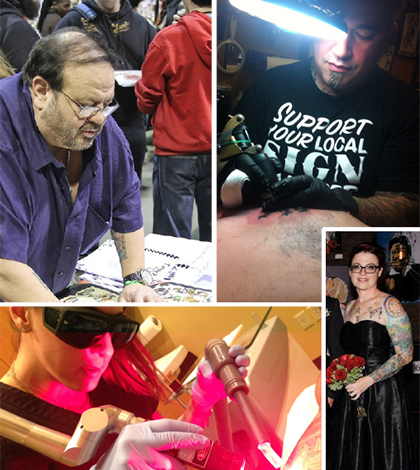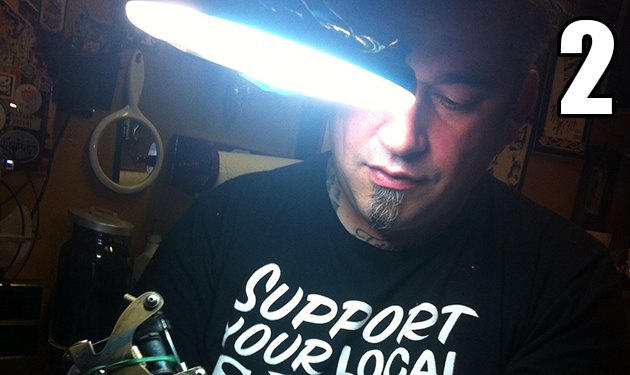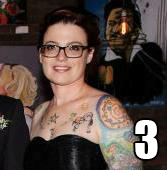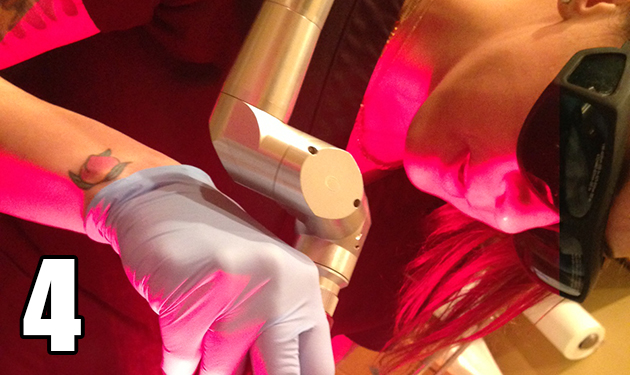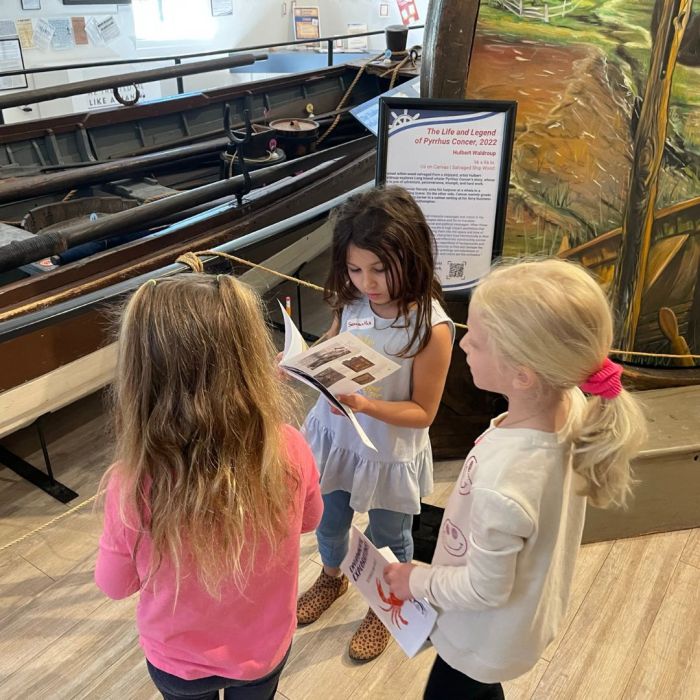The Supplier
In between juggling nonstop phone calls, eating breakfast at his desk and barking out orders to his assistant, Spider, tattoo tycoon Carlo Fodera, recalls how after he helped lobby New York City to legalize tattooing in 1997, he launched his tattoo supply company to help the influx of new artists. “All the talented guys and ladies could not find equipment on their own,” says Fodera, better known as Coney Island Carlo, who also has a line of spirits of the same name. Back when the 49-year-old started tattooing in ’77, the old timers made scoring needles, ink and other gear tricky. So once the industry went mainstream, he set up Technical Tattoo Supply 15 years ago in West Babylon. He now counts customers worldwide among his clientele, who mostly buy more than 100,000 bottles of ink a year, much of it made on Long Island. He also owns Studio Enigma, a chain of tattoo shops in New York City. “We take pride in making a quality product,” he says. “We have a lot of fun here, but we’re also a serious business.”
The Artist
Fainters. Requests for massive tattoos shrunk to the size of a quarter. Customers taking off more clothes than required. Covering up homemade tattoos gone bad. After nearly 20 years of tattooing hundreds, if not thousands of people with Brooklyn-style flash at Lone Wolf Tattoo in Bellmore, Ron Bianco, who bought the shop three years ago, has seen it all. “With what we have at our fingertips now, the amount of research you can do while riding an elevator, there’s no reason for someone to get a crappy tattoo,” Bianco says while inking a black griffin across this reporter’s chest. “They should research and know where they’re going and who they’re going to and everyone should have beautiful tattoos.” But, as Bianco puts it: “People get, like, really weird when it’s tattoo time.” There are no-shows. Reality TV fans who think big tattoos only take a half hour. And the guy who requested his then-girlfriend’s name while planning for the inevitable breakup by also bringing a sketch of a car that Bianco later covered it with. Despite his unconventional line of work, he’s living the American dream. “I got two kids, two cats, a wife and a house,” he says between dabs. “They call me ‘Regular Ron.’”
The Aficionado
Shortly after she turned 20, Gigi Becker of Huntington got the itch for her first tattoo, a little red heart on her shoulder. Twenty more tats followed two years later. And, after a lull, an all-out ink-fest broke out five years ago, with work on her legs, arms, neck, abdomen and a large tree reaching from her side to across her back. “I can’t even draw a stick figure,” she jokes. “I pay people to be artistic for me.” A few, like a pink cupcake on her hand, match her friends’. She has a tattoo key to a tattoo heart that is painted on her husband—his only body art. While most people compliment her on her stars, rainbows, fish and owls—often getting more touchy feely than she’d prefer—the 39-year-old office manager still faces the occasional critic. “Oh my God, I can’t believe you did this to your body!” she recalls one woman yelling. “What does your mother think? What are you going to do when you get older!?” As taking thousands of electrically charged needle pricks gives tattoo aficionados thick skin, Becker brushes it off. As for the cost, she echoes signs often found hanging in tattoo shops: “Good tattoos aren’t cheap and cheap tattoos aren’t good.”
The Remover
For someone who owns a tattoo removal shop, perhaps the most striking thing about Bethany Cirlin is how many she has of her own—including one on her arm she’s also having lightened with lasers to prep for a new cover-up tat. “I’ve always been obsessed with tattoos, and anyone who’s had a tattoo has had a bad one,” she says while sitting in the Zen-inspired waiting room of #cleancanvasmoreart at The Laser Spa, formerly a medi-spa before she switched it to tattoo removal full-time this spring. “The fact that it can be taken off is a phenomenon. It used to be permanent.” The lightening process can take up to two years, depending upon immunities, skin tone, placement and ink; blue and green, for example, are tougher. Among the most common tattoos removed are names either misspelled or of ex-lovers. There’s also the occasional regretted racist tattoo. She thinks of her work as therapeutic, but she doesn’t pry. She also offers free removal of radiation-mapping tattoos for cancer survivors—dot-sized markers sometimes required to assist therapists in aiming the radiation. Although the laser is painful, she notes the payoff is worthwhile. “Living with something on your body that you hate—that never goes away,” she says.



